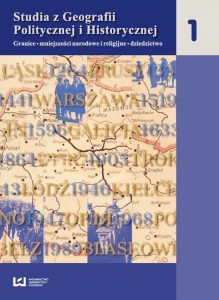Ze studiów nad rolą protestantów w kształtowaniu krajobrazu kulturowego Łodzi
Study on the role of Protestants in shaping the cultural landscape of Łódź
Author(s): Mariusz KuleszaSubject(s): Essay|Book Review |Scientific Life
Published by: Wydawnictwo Uniwersytetu Łódzkiego
Keywords: protestanci; krajobraz kulturowy; Łódź; miasto ; Protestants; cultural landscape; Łódź; city
Summary/Abstract: Łódź jest miastem, na którego rozwój istotny, a w wielu przypadkach wręcz decydujący, mieli wpływ – obok Polaków – przedstawiciele innych narodowości, religii i kultur. To oni w znacznym stopniu określili specyficzne oblicze miasta. Ważne miejsce w tym procesie zajmowali łódzcy protestanci, głównie niemieckiego pochodzenia, którzy stanowili najbardziej ekspansywny żywioł w rozwijającym się mieście fabrycznym – społeczność najbardziej zorganizowaną, posiadającą własne sprawnie działające instytucje i organizacje oraz prężne ciała społeczne. Musiało to pozostawić ślady we współczesnym krajobrazie miasta. Powszechnie znana jest kariera XIX- -wiecznej Łodzi wyrosłej na dynamicznie rozwijającym się przemyśle włókienniczym. Mniej natomiast powszechna jest wiedza o jej obliczu urbanistyczno-architektonicznym oraz o ludziach, którzy je stworzyli i którzy pragnęli, by było ono piękne, wyjątkowe i jedyne w swoim wyrazie. By było „ziemią obiecaną” i „domem rodzinnym”, z którym się utożsamiali. It has been more than 70 years since Łódź was a multi-ethnic city. But the traces of those days still remain. The characterised objects remind Łódź as it used to be when it was formed by different nations, including Protestants of German descent, who determined its dynamic development, especially after 1914. Today, the most evocative and clear trace of the presence of a multi-ethnic and religiously diverse community are the architectural monuments. They have survived almost intact, except for Jewish temples, which were completely destroyed in 1939–1945. Church buildings, tenement houses, mansions and factories were allowed to arise, as this what the erstwhile Lodzermenschen of different nations and religions wanted. The architecture of Łódź of the 19th and early 20th century shows changing styles, fashions and tendencies, which came here from the artistic centres all over the continent. In the buildings constructed then, we can see an obvious cosmopolitanism, but also unavoidable provincialism. The local bourgeoisie, and the architects they employed, knew and admired the buildings of St. Petersburg, Berlin, Vienna and Wrocław, as well as of the nearby Warsaw. Therefore, they were built according to what was fashionable at the time, what the sponsors liked and what was worth building to make Łódź a fully European city.
Journal: Studia z Geografii Politycznej i Historycznej
- Issue Year: 2012
- Issue No: 01
- Page Range: 167-192
- Page Count: 26
- Language: Polish

